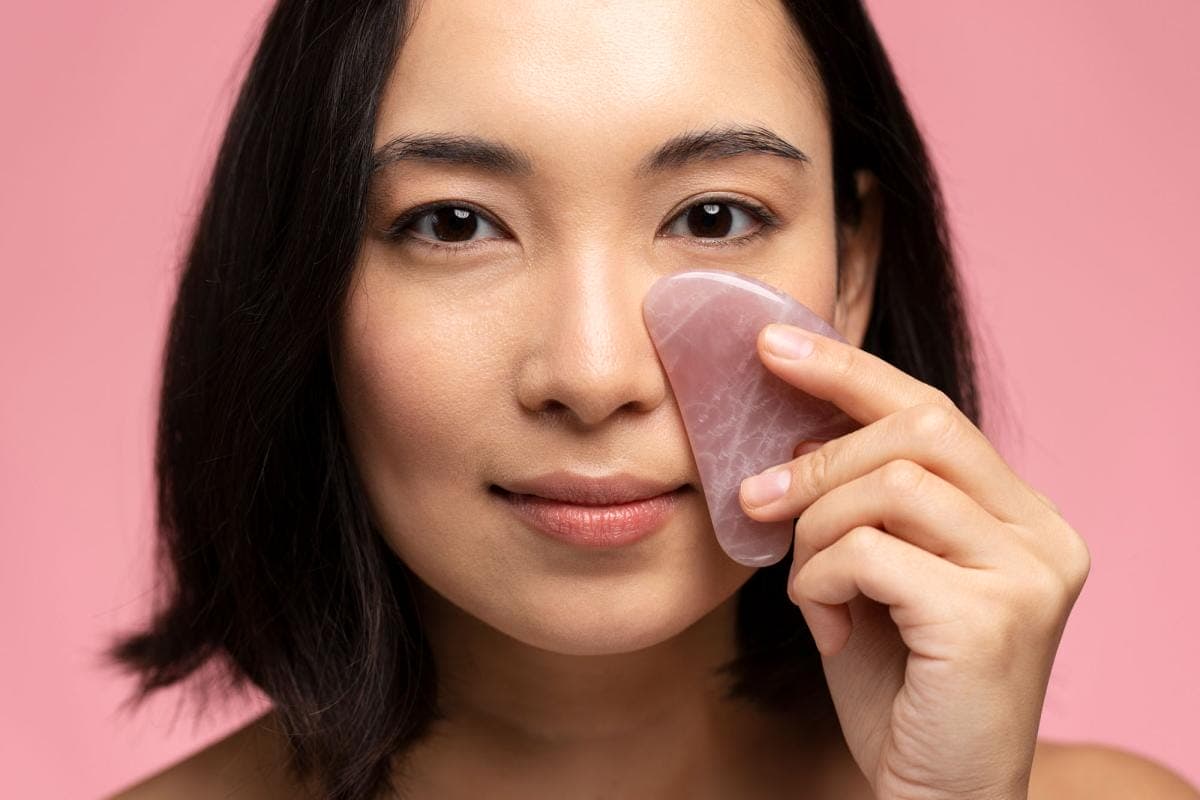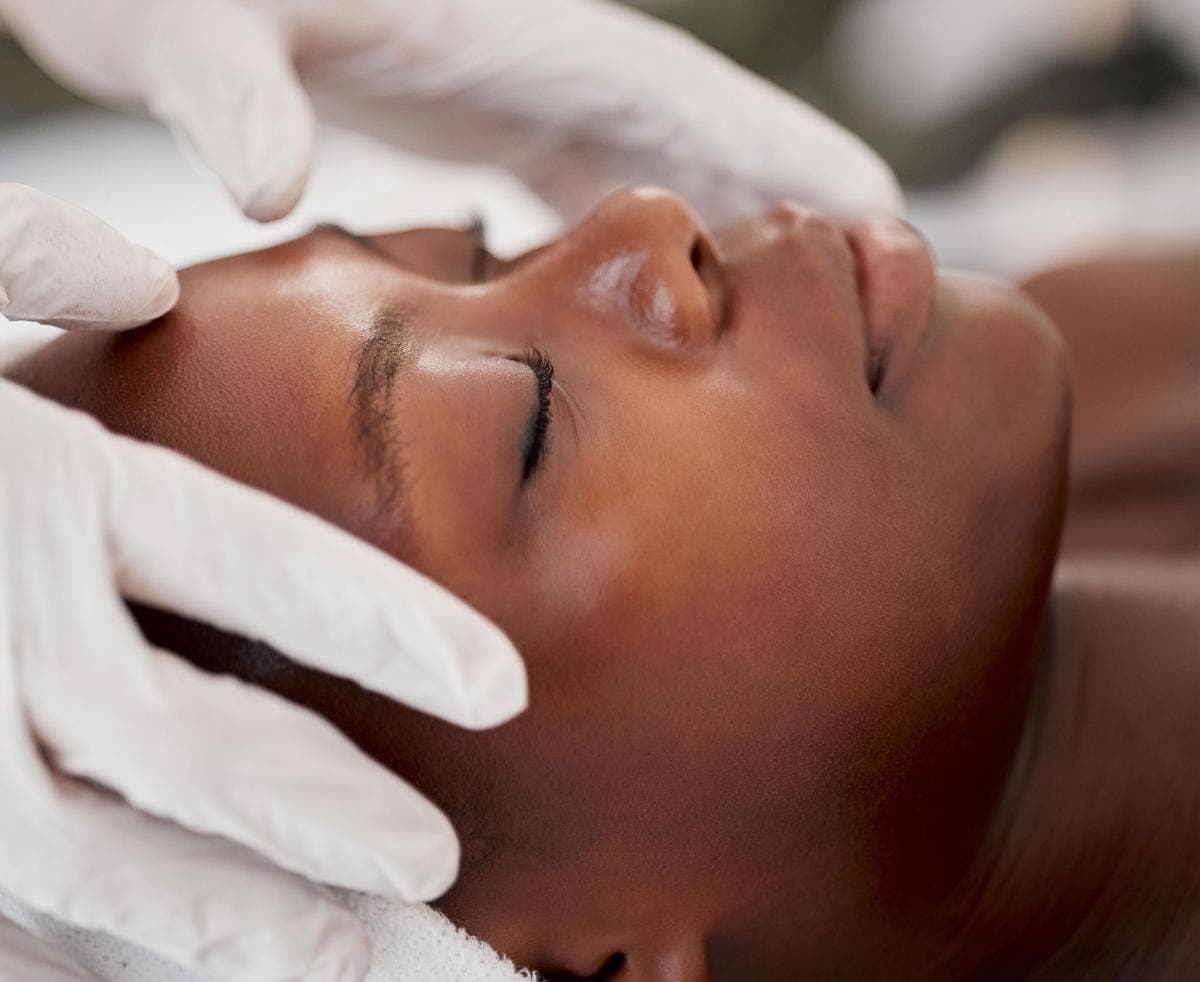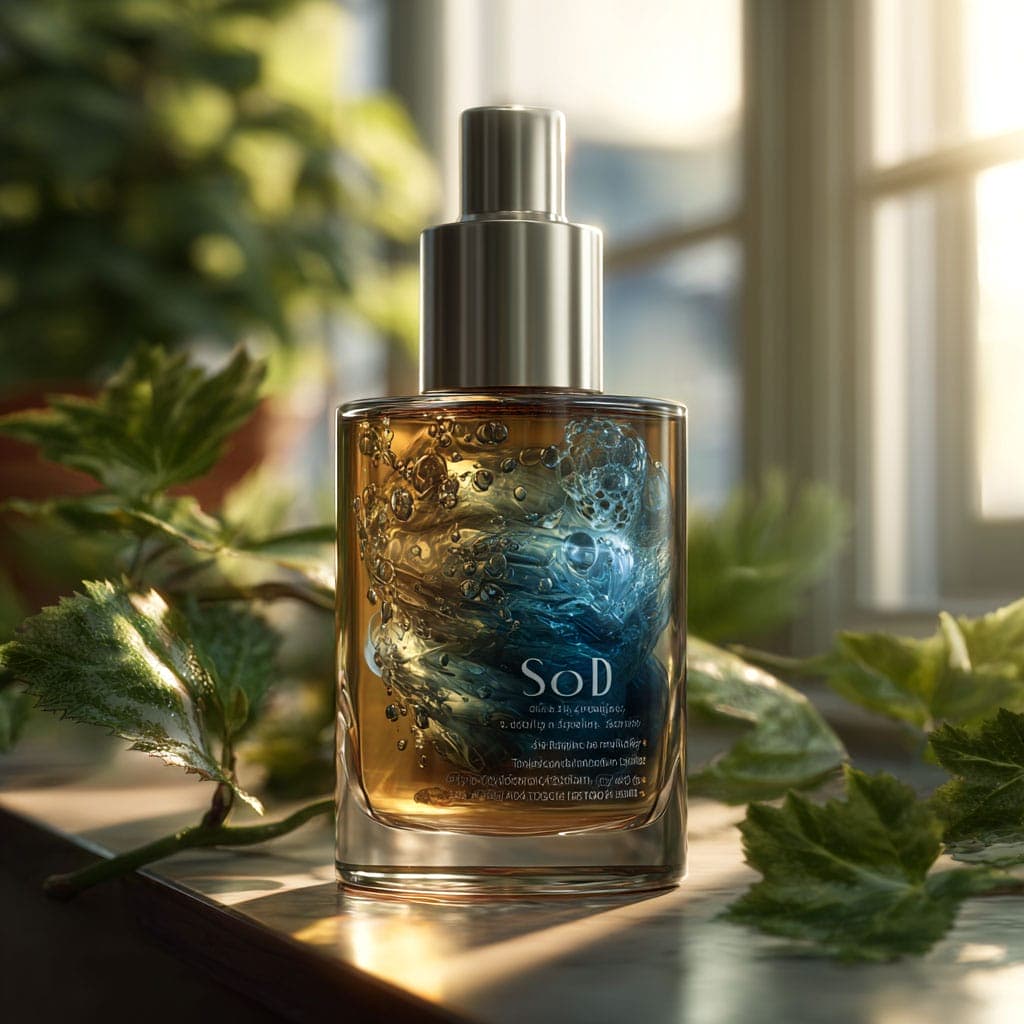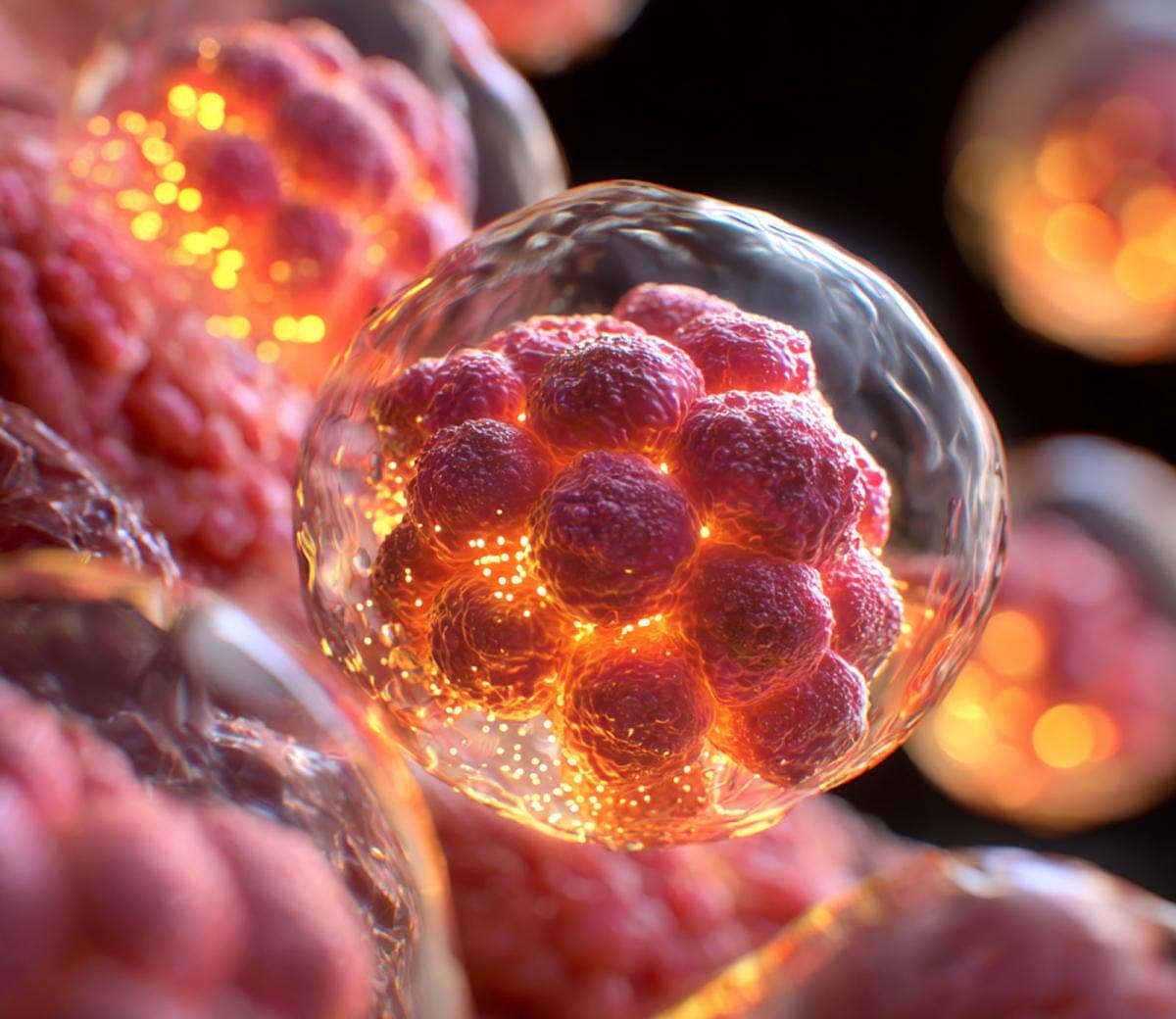Skincare
Superoxide Dismutase Is Your Skin Guardian Against Oxidative Stress
If you click on links we provide, we may receive compensation.
Every time the sun rises, your skin gears up for battle. Dermatologists estimate that ultraviolet exposure alone drives up to eighty percent of visible facial aging, overshadowing the calendar’s quiet march forward. (pmc.ncbi.nlm.nih.gov) I can’t think of a more vivid reminder that oxidation – not birthdays – writes most of our wrinkle story.
Yet skin isn’t defenseless. Under every freckle sits a microscopic bodyguard called superoxide dismutase (SOD). This enzyme grabs the cell-damaging superoxide radical and snaps it into far kinder molecules before they can shred collagen or mutate DNA. The moment I learned how fast SOD neutralizes a radical – one reaction every few microseconds – I stopped seeing it as just another ingredient. It’s innate armor.
SOD belongs to a small but vital family of enzymes (SOD1 in the cytosol, SOD2 in mitochondria, SOD3 outside cells). Together they form skin’s first responder unit, showing up seconds after light, pollution, or inflammation sparks oxidative trouble. Without them, reactive oxygen species (ROS) spiral into chain reactions that fray elastin, crack lipid barriers, and brown pigment unevenly.

Why Radicals Keep Attacking
High-energy photons and exhaust particles punch electrons off oxygen, turning it into the superoxide anion. That rogue molecule ricochets through membranes, triggering yet more ROS. The cascade twists proteins, slices lipids, and nicks DNA bases thousands of times per cell every day. Skin’s surface takes the brunt because it sits at the frontline of ultraviolet, heat, smoke, and urban ozone. When assaults exceed the enzyme squad’s capacity, collagen cross-links, barrier lipids thin, and erythema flares.
The domino effect explains why antioxidants matter: each one interrupts a different step. Vitamin C hands off electrons. CoQ10 patches mitochondrial leaks. But SOD plays quarterback, intercepting the very first radical of the chain. Strip it away and other antioxidants spend all day chasing fires they can’t fully contain.
Meet Superoxide Dismutase
Chemically, SOD converts two superoxide radicals plus two protons into ordinary oxygen and hydrogen peroxide. Catalase and glutathione peroxidase quickly dismantle that hydrogen peroxide, finishing the detox relay. What fascinates researchers is the enzyme’s speed. Its catalytic rate hovers near the diffusion limit of biochemical reactions, meaning SOD neutralizes radicals almost as fast as they collide.
Different forms specialize. SOD1 relies on copper and zinc, SOD2 on manganese, and SOD3 circulates in the extracellular matrix tethered to heparan sulfate. The skin expresses all three, but SOD3 claims fame for patrolling the dermal collagen network where wrinkle depth begins.
SOD Levels Slip With Age
Unfortunately, enzyme output declines as birthdays accumulate. A recent animal-plus-human comparison showed SOD3 expression plummeting in aged skin while SOD1 and SOD2 stayed flat. (mdpi.com) Less extracellular enzyme means fewer sentries guarding collagen fibrils. Photodamage scores climb, and micro-wounds linger longer before closing. When researchers knocked out SOD3 in mice, their wounds closed as slowly as those of naturally aged animals, underscoring its repair role. (pmc.ncbi.nlm.nih.gov)
I often picture SOD like a public works crew: when budgets shrink, potholes stay open and small cracks widen. Restoring enzyme levels – whether topically or orally – has become a major target for cosmetic scientists because it reinforces the foundation rather than merely painting over surface blemishes.

Research That Moves The Needle
One breakthrough came from South Korean investigators who over-expressed extracellular SOD in dermal tissue. Collagen production surged and classic aging markers quieted, confirming the enzyme’s direct influence on matrix integrity. (pubmed.ncbi.nlm.nih.gov)
Clinical data back the benefits in real people, too. An eight-week Japanese trial gave 250 mg of a melon-derived GliSODin supplement to forty-one men. Their minimal erythema dose – the UV energy needed to trigger sunburn – rose 5.1 percent, while the placebo group’s threshold actually fell five percent. (glisodin.org) A modest number, yes, but the direction tells a bigger story: boosting systemic SOD stiffens the skin’s UV shield from the inside out.
Several topical studies pair stabilized SOD with retinoids, peptides, or growth factors. One double-blinded comparison used capsules of an SOD nutricosmetic alongside tazarotene cream. After ninety days, the combo reduced fine-wrinkle scores twice as much as retinoid alone and brightened mottled pigmentation more effectively. (pmc.ncbi.nlm.nih.gov)
Inflammation And Beyond
Oxidative stress doesn’t stop at wrinkles. It also fans inflammatory flames. Psoriasis and atopic dermatitis lesions overflow with ROS. In an IL-23-induced psoriasis model, transgenic mice brimming with EC-SOD developed far milder plaques than ordinary littermates. (sciencedirect.com) By dampening the radical surge that provokes cytokine storms, SOD softens redness and itching – a benefit many eczema sufferers feel intuitively when they try SOD-rich products.
There’s an antimicrobial twist as well. Neutrophils use superoxide to kill pathogens, but excess radicals can backfire, damaging surrounding tissue. SOD helps strike the balance, letting immune cells neutralize invaders without torching healthy neighbors.
Working SOD Into Everyday Care
Formulators face a hurdle: the native enzyme is a large, fragile protein. Early versions broke down before reaching viable layers. Modern chemists wrap SOD in phospholipid liposomes, couple it with wheat-gliadin for gut absorption, or engineer smaller recombinant fragments that retain catalytic punch.
For topical use, look for “stabilized SOD,” “liposomal SOD,” or “SOD encapsulated in lecithin.” Apply a pea-sized amount after cleansing and before heavier creams. I like pairing it with niacinamide in the morning, followed by a high-SPF mineral sunscreen so the enzyme isn’t swamped by fresh ultraviolet assaults. At night, layering SOD under a gentle retinoid makes sense because it blunts the oxidative flare-ups retinoids can trigger in sensitive skin.
Oral supplements rely on enteric-coated melon extract or next-generation recombinant SOD bound to polymers that survive stomach acid. If you try this route, give it at least eight weeks; most human studies measure endpoints at two or three months.



Synergy With Familiar Antioxidants
One enzyme can’t do the entire job. Vitamin C donates electrons to recycle vitamin E, while polyphenols mop up peroxyl radicals that slip past SOD. Think of a layered defense: SOD kicks off the relay, catalase handles peroxide, glutathione deals with remaining reactive species, and small-molecule antioxidants plug gaps.
Interestingly, research indicates that supplying extra SOD revitalizes downstream systems. When superoxide falls, glutathione stores last longer, and catalase doesn’t run overtime. The overall redox environment shifts toward repair mode, giving fibroblasts room to knit collagen instead of scrambling to survive.
FAQs
Does SOD lighten dark spots?
Indirectly. By taming inflammation and protecting melanocyte DNA, SOD reduces the erratic pigment production that forms post-inflammatory hyperpigmentation. Over time skin tone evens out.
Is SOD safe for daily use?
Clinical trials report excellent tolerance. Because the enzyme already exists in every tissue, topical or oral boosts rarely cause irritation or allergic reactions. Always patch-test new formulas, especially if wheat-derived carriers are involved.
Can I pair SOD with acids or retinoids?
Yes. In fact, antioxidants often buffer the oxidative burst that follows retinoid action, making the adjustment period smoother. Apply SOD first, let it settle, then layer actives.
How long before I see results?
Barrier comfort improves within weeks, but structural changes like wrinkle depth take two to three months because collagen remodeling is slow. Stick with consistent use, and photograph progress rather than relying on memory.




